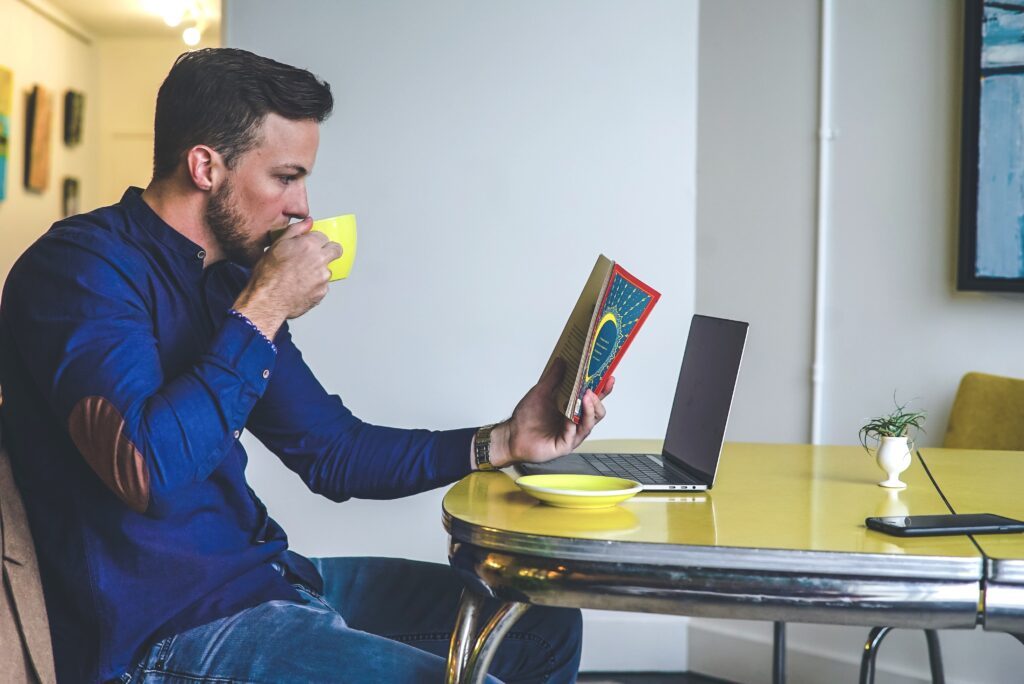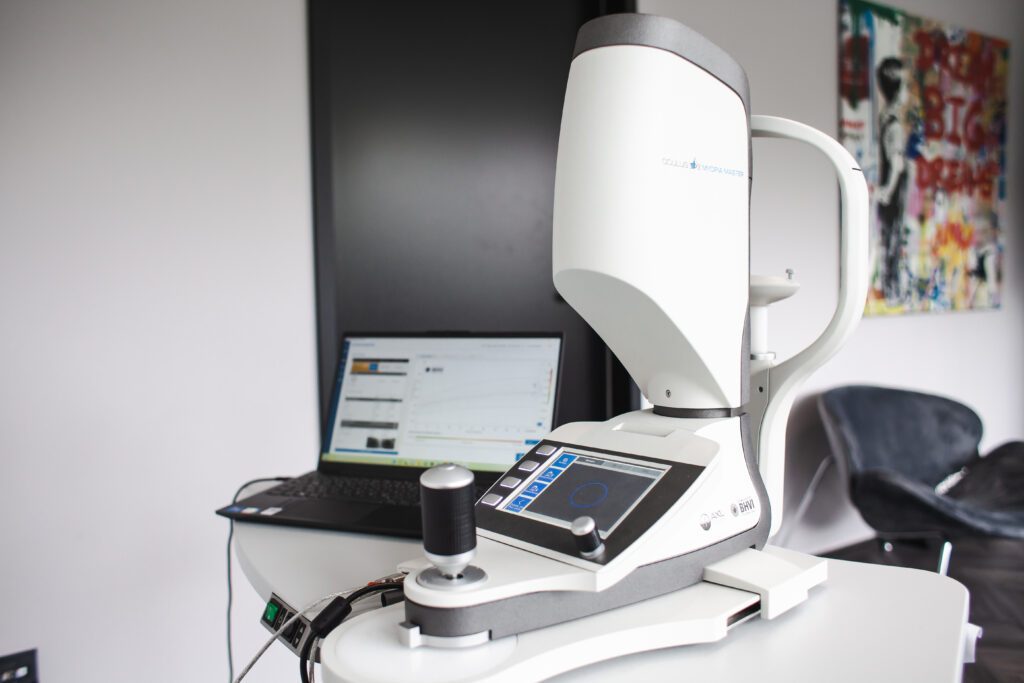In our vision school we treat myopia. But what does that actually mean? How exactly does myopia manifest itself and what treatment options are available? We explain the details:
Myopia, better known as nearsightedness, describes a widespread functional impairment of the eye. Affected individuals can see their surroundings well at short distances, but objects in the distance appear only blurred and hazy. Approximately 1.4 billion people worldwide are nearsighted. In recent years, the number of myopic people has increased significantly. A sharp increase is particularly evident among children and adolescents. So-called school myopia is the most common form of myopia and affects children between the ages of six and 15.
Forecasts predict that by 2050, 50 percent of people worldwide will be nearsighted. The reasons for this lie in the ever-increasing use of smartphones and computers.

In a nearsighted eye, the incoming light rays are not refracted on, but already in front of the retina. This occurs because the myopic eyeball has an elongated shape. There are various causes for the growth in length of the eyeball. Besides a hereditary component, it is mainly our lifestyle that promotes myopia. Studies show that too many hours of close work (on a computer, tablet, smartphone or even reading books) promote the growth of the eyeball’s length. Whenever we read, play, or focus for long periods of time at close range, a device is very close and often right in front of our eyes for hours. Monotonous, prolonged viewing at short distances damages vision and promotes myopia.
Myopia that has already developed cannot be reversed. However, the right lenses or contact lenses can compensate for this. Through myopia screening, we here at BeyondEye try to detect the onset of myopia as early as possible and prevent its progression if possible. Myopia prevention is therefore particularly important for children and adolescents. Thanks to the latest research findings, we can counteract this with a range of innovative therapeutic options.
The Myopia Master is a diagnostic device specially designed for myopia screening and control. By measuring the axial length, refraction and keratometry of the eye, the risk of myopia is reliably determined. By collecting this data, we at BeyondEye are able to detect myopia even before it shows its first effects.

Especially for children, the time spent in natural daylight plays a major role. Sunlight releases the substance dopamine in the body, which inhibits the longitudinal growth of the eye. Children should therefore spend at least two hours a day outside in natural light.
Another factor is the ever-increasing increase in close-range activity – even at a young age. Due to digitalization and the associated increased use of smartphones, children today are doing significantly more close-up work with their eyes than ever before. Constantly focusing at short distances promotes longitudinal growth of the eyeball, which leads to an increase in myopia, as previously described. A reading distance of at least 30 centimeters should therefore be maintained if possible. To relax the eyes, it is also advisable to take frequent breaks and look into the distance.
Here at our BeyondEye practice, you can expect a modern range of treatments for myopia based on the latest scientific findings. Preventive care and therapy can consist of the following components:
We use atropine therapy specifically for children with myopia. This involves administering a small dose of atropine directly into the eye once a day before bedtime. The atropine is to prevent the eye from growing further in length. The eye drops consist of natural ingredients such as belladonna, with which many good experiences have already been made in ophthalmology. In addition, experience has shown that very few side effects occur.
Studies show that atropine therapy can reduce the progression of myopia by approximately 50 percent. This type of therapy is suitable for children between the ages of six and 14 who suffer from increasing nearsightedness/ – especially if the parents are already nearsighted or there is a family history of myopia.
During therapy with Ortho-K contact lenses, special contact lenses are fitted which are to be worn exclusively at night. This method is suitable for both children and adults. The fitted lenses minimally deform the cornea overnight, ensuring that visual impressions arrive at the correct location on the retina. Studies show that therapy with Ortho-K lenses can reduce the progression of myopia by approximately 50 percent. Ortho-K lenses can be fitted from the age of six, at a cost of approximately 45 euros per month.
Soft multifocal lens therapy uses a special soft contact lens to create a second image plane in the eye, which ensures the correct positioning of the image impressions on the retina. Multifocal contact lenses are worn during the day (maximum eight hours) to reduce the progression of myopia by approximately 30 percent. This could also be proven by studies. The supply with such lenses is possible starting from the sixth year of life, the costs amount to approximately 40 euro per month.
This type of treatment combines the two therapeutic approaches described above. The Ortho-K lenses, which are worn exclusively at night, minimally deform the cornea. The additional therapy with atropine simultaneously inhibits eye growth. According to current research, a combination of these two therapies is suitable for slowing down the progression of myopia in children. The cost of combination therapy is approximately 60-80 euros per month.
In this type of therapy, we fit special lenses explicitly designed for myopia prevention in children. The novel lenses avoid imaging behind the retina and shift the focal lines in the eye forward through a special design of the lens surface. The glass technology and the costs vary depending on the manufacturer. This type of therapy is particularly suitable for younger children, as no lenses need to be fitted. At BeyondEye, we are happy to consult with you to find the best individualized care for you or your child.
Do you suspect you have myopia or recognize myopia in your child? Then simply make an appointment with us online now.

Currently, about 15 percent of all children in Germany are nearsighted by the end of primary school. In later life, the numbers continue to rise dramatically: Among 25-year-olds, almost half (45 percent) are already affected by myopia. The reduction of myopia progression in childhood is therefore of particular importance. The professional ophthalmological association BVA (Berufsverband der Augenärzte Deutschlands e.V.) and the German Ophthalmological Society comment on this. Here is a summary of the most important findings for you: